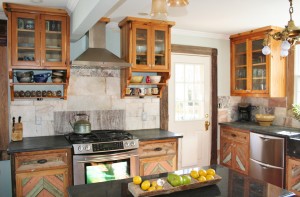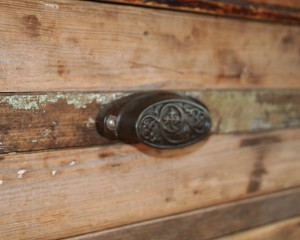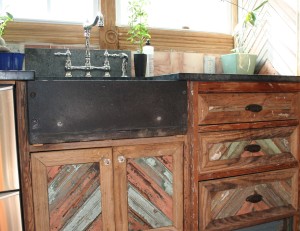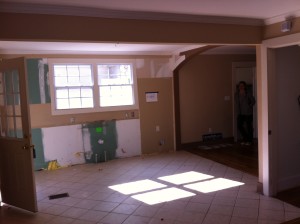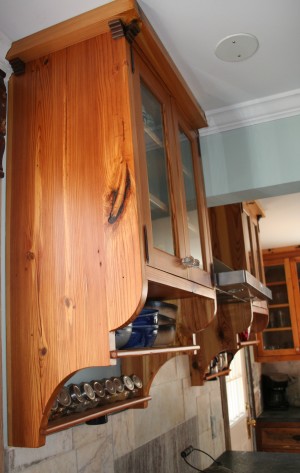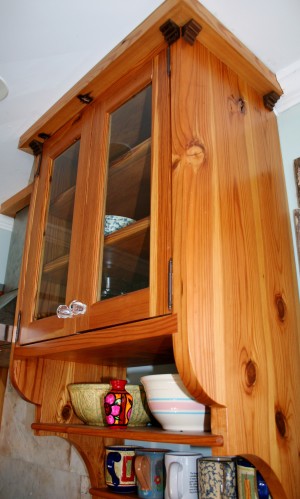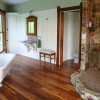It’s that simple.
They are the absolute nucleus of the home. They are the modern day campfire, where everyone gathers: family, children, friends.
Having a party? You might want everyone to congregate in your lovely living room, take in your beautiful fireplace and hearth, feel the warmth of the flames. But as fate will have it, you will be sorely disappointed, because your guests will all be in the kitchen.
When I began in the renovation business, I bought homes, restored them and sold them. And I sat at many a closing table and always asked my buyer, “Why my house? What was the clincher?” Hands down, they said, “Kitchen.” Sometimes, they’d follow up with “master suite, historic details, great neighborhood” but “kitchen” was always first.
And I love renovating kitchens. It’s a rich room, ripe for installing custom furniture (cabinets), and stone, and metals and ceramics (tile). It’s a room where you can express yourself and your flavor.
This kitchen is a perfect example of creativity and flavor. Custom kitchens provide the opportunity to craft something that is truly unique and distinctive.
And using reclaimed materials is another way to blend history, textures, patinas, hallmarks of age, and old paint.
This kitchen is the very definition of color, texture, and character.
We began with a large blank canvas in this room. There was beige contractor grade tile, brown paint, and no cabinets. We began by demolishing the tile and installing a combination of reclaimed white oak floors with new white oak. Next, we laid out the design and pulled out a large load of reclaimed bathroom beaded board from turn-of-the-century bathrooms.
My brilliant team of cabinetmakers alternated the paint colors and ran the wood on a diagonal for visual interest. We used some Victorian trim casing boards to anchor the cabinets.
For counters and the sink, we found reclaimed soapstone from NY–the Colgate College science lab. The sink needed restoration to hold water, but it works beautifully now. The faucet is a Belle Foret.
The backsplash is a combination of salvaged stone mantels, some from Tennessee, some from Atlanta. We mixed them in randomly for color and interest.
The upper cabinets were milled from three inch thick flooring planks taken from a circa 1740s Kentucky bourbon distillery that was dismantled for sale of its parts. The design has a French influence. We used walnut corbels as accents at the top of the cabinet’s simple crown mold.
Wavy green glass was installed in new doors, repurposed from antique windows, salvaged from old houses.
The glass knobs are new, reproductions. But the bin pulls are stamped 1875 on the back and have a patina of age.
